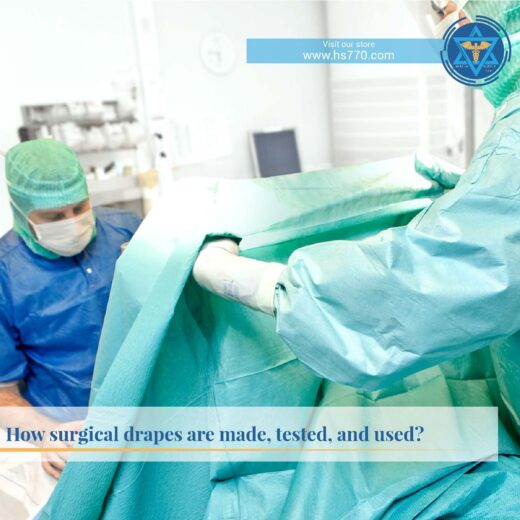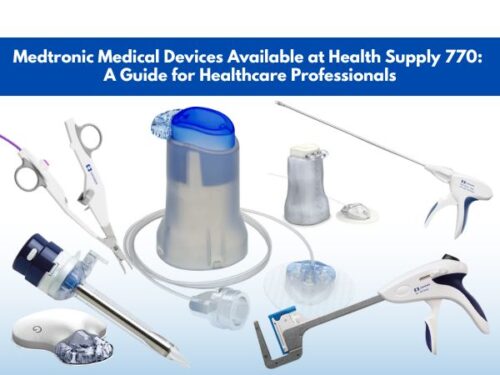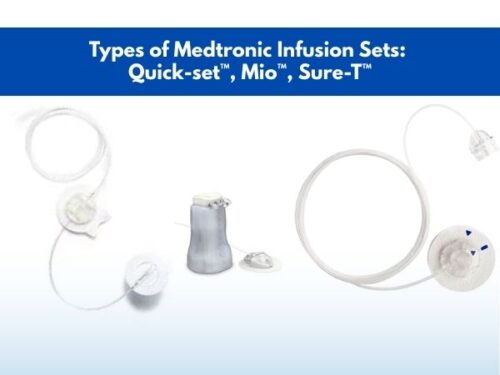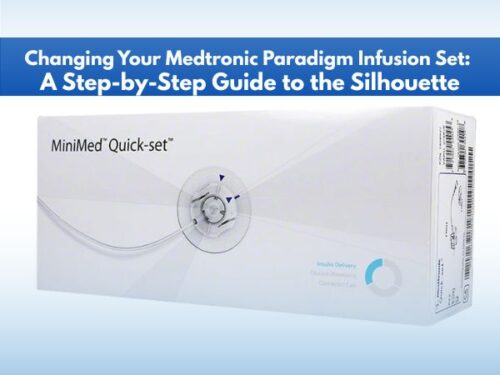How Surgical Drapes are Made, Tested, and Used?

The prevention of infection is important when it comes to surgical care. As a result, surgical drapes are produced from particular fabrics before they are used in surgery and put to the test for comfort and durability. Surgical drapes are an essential part of keeping the operating room sterile. They are also used to cover equipment that may be contaminated.
Surgical drapes are subject to strict quality control measures. They must be made in a clean environment and meet certain size and absorbency standards. Drapes are also tested for resistance to tearing and abrasion. In this blog post, we’ll be discussing all you need to know about surgical drapes. We will also discuss the importance of using sterile drapes in the operating room.
What Are Surgical Drapes?
A surgical drape is a type of medical equipment used to safeguard the patient during surgery. They can assist in controlling ventilation and temperature in an operating room environment and are created from a variety of materials, including cotton and polyester.
Surgical drapes must meet certain standards set by the FDA in order to be used in surgery. These standards ensure that the drape is effective at providing a barrier between the patient and the surgical team and that it will not cause any harm to the patient during surgery. Other uses for medical drapes include transporting patients or staff personnel while concealing their heads.
What is a Surgical Drape Used For?
Surgical drapes are mostly used to stop infections during surgery. You can stop dangerous contaminants from entering the body and spreading disease by enclosing the patient in a sterile barrier.
During a medical operation, surgical drapes can be applied in several ways. For instance, they can be placed over tools or other gear to prevent skin contact with the patient. Finally, operating room airflow and temperature are essential factors in lowering the risk of infection and can be maintained with the use of surgical drapes.
In order to protect patients during surgery, surgical drapes are required. They help in keeping the temperature and airflow in an operating room, lowering the risk of infection. Surgical drapes can also be utilized for a variety of other things, like shielding staff personnel or patients during transport.
How Are Surgical Drapes Made?
Surgical drapes are made from a variety of materials, including cotton, polyester, and blends of these fabrics. The fabric is usually treated with an antiseptic or antibacterial solution to help prevent infection. Each variety has advantages and disadvantages of its own, so it’s important to choose the best one for your specific requirements.
Drapes are cut to the desired size and shape and then sewn together. Once the drape is complete, it is often treated with a water-repellant or anti-static finish.
After the drape is made, it undergoes several tests to ensure its quality. These tests check for things like absorbency, breathability, and durability. Once the drape passes all of these tests, it is ready to be used in surgery.
How Are Surgical Drapes Tested?
Surgical drapes are regularly tested for a variety of factors that could affect their performance. Some of the most important tests include:
- Bacterial Barrier Testing: This test determines how well a surgical drape prevents bacteria from passing through it. The drape is placed over a Petri dish containing bacteria and then incubated for a period of time. The number of bacteria that have passed through the drape is then counted and compared to a control.
- Fluid Repellency Testing: This test is used to determine how well a surgical drape repels fluids such as blood or saline solution. The drape is placed on a special device that simulates body fluids being sprayed onto it, and the amount of fluid that is absorbed by the drape is measured.
- Tensile Strength Testing: This test is used to determine how strong a surgical drape is. The drape is placed on a special device that measures the force required to break or tear the drape.
How To Choose The Right Surgical Drapes?
To ensure the best draping for patients, it’s important to select the right types of surgical drapes. Here are some important things to think about:
- Moisture management: Effective moisture management is essential for surgical drapes in order to avoid accumulation and possible infection. Additionally, they must be stain and fade-resistant.
- Durability: Surgical drapes must be strong and long-lasting, especially when they are utilized in high-stress procedures. This will lessen the possibility of tearing or injury, which could cause problems for your patient.
- Resistance To Infection: The ability of surgical drapes to fend off infection is essential for preserving the health of your patient. They should be stain- and colorfast as well.
- Airflow: In order to prevent the patient from overheating or an excessive buildup of moisture, surgical drapes must provide sufficient airflow.
Are there any Risks Associated with using Surgical Drapes?
Yes, there are certain risks associated with using surgical drapes. If not used properly, surgical drapes can increase the risk of infection and cross-contamination. Additionally, surgical drapes can tear easily and cause additional complications if they are not made from high-quality materials.
Conclusion
In conclusion, surgical drapes are an important part of the surgical process, helping to keep the operating area clean and sterile. It is fascinating to see how these drapes are made, tested, and used in surgery. With such strict standards for quality and safety, you can be sure that surgical drapes will continue to play a vital role in protecting patients during surgery.
FAQs:
Why do surgeons use drapes?
Surgeons use surgical drapes to protect themselves from bacteria during surgery. A surgeon’s hands are covered in blood, bodily fluids, and other secretions. The blood is at a higher risk of spreading germs to other patients.
Why are patients faces covered during surgery?
The face is covered at all times because patients must remain intubated and sedated during surgery.
When do you use sterile drapes?
Sterile drapes are required whenever there is a risk of droplet spread. This would include any procedure where blood or bodily fluids contact the patient’s skin.
Are surgical drapes fire resistant?
Most surgical drapes are fire-resistant, but not all. Some drapes, especially those made of cotton, are not. It is best to ask about this when making the drapes.
Can you catch on fire during surgery?
No. However, there have been rare instances of electrical burns or burns from chemicals that could have been non-sterile (for example, an alcohol-based antiseptic).



















